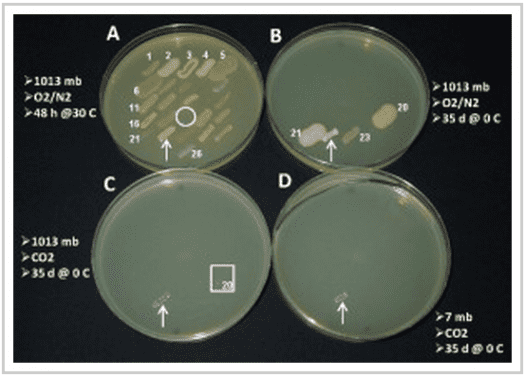The ultimate goal of all current Mars missions and observations is that of finding evidence of life or, on the contrary, collect data that would once and for all flag the planet as barren and devoid of life. Recent findings from scientists at University of Florida both help ease and complicate this quest after it’s been found Earth bacteria can live under the same low pressure conditions found on Mars.
This is a huge issue that is currently warranting a great of attention since contamination of Mars with life originating from Earth would hamper current efforts. To this end, scientists tried to assess to what end stowaway bacteria on Mars destined spacecraft might influence current research. Basically, they wanted to see if any contaminants could survive on Mars.
Some the bacteria studied belong to a group scientists like to call extremophiles because they live in some of the most horrid, unimaginable places on Earth, exposed to uninviting conditions like low oxygen, high carbon, extreme temperatures and pressures. The researchers studied a number of bacterium strains, including some that aren’t classed as extremophiles, and most of which belonging to strains that have been recovered before from spacecraft, and are thus more likely to survive radiation exposure and other extreme conditions faced during a trip to the red planet.
“As we send spacecraft to Mars, we want to have confidence that we’re not going to contaminate the landing sites,” said Andrew Schuerger, a co-author of the studies and a research assistant professor in UF’s plant pathology department.
“We want to know, once you transport an Earth bacterium to Mars, can it survive, let alone grow?” said Wayne Nicholson, also a co-author of the studies and a professor in the UF/IFAS microbiology and cell science department.

The team cultured these bacteria in dishes and then subjected each of them to extreme conditions by turning down temperature, oxygen and pressure levels. For instance, the researchers exposed the cultures to minute pressure in the order of 7 millibars of atmospheric pressure. In comparison, pressure at sea level on Earth is about 1,013 millibars.
Interestingly enough, only one bacteria survived the ordeal – Serratia liquefaciens, which is actually a generalist bacteria, far from being classed as an extremophile. In a complementary study Schuerger and colleagues looked at thousands of strains of bacteria recovered from core samples drilled 40 to 70 feet into the Siberian permafrost. Of this number, six — all members of genus Carnobacterium — survived and grew.
The discovery is enlightening since it proves that indeed it is possible for contaminants, albeit certain types of bacteria, may reach Mars and even survive there. The researchers caution however that hat it does not mean bacteria can grow on current-day Mars. So far, scientists have only scratched the surface, since they still need to screen bacteria for all 17 harsh factors on the surface of Mars — including high salt levels, intense radiation and severely dry conditions.
“It opens up much more complex research that was not previously available to us because we didn’t know if anything could grow at 7 millibars,” he said. “But there are still numerous biocidal and inhibitory factors on the surface of Mars that are likely to inhibit the growth of terrestrial microorganisms at the surface.”
The studies were published in the journals PNAS and Astrobiology.
[source]






